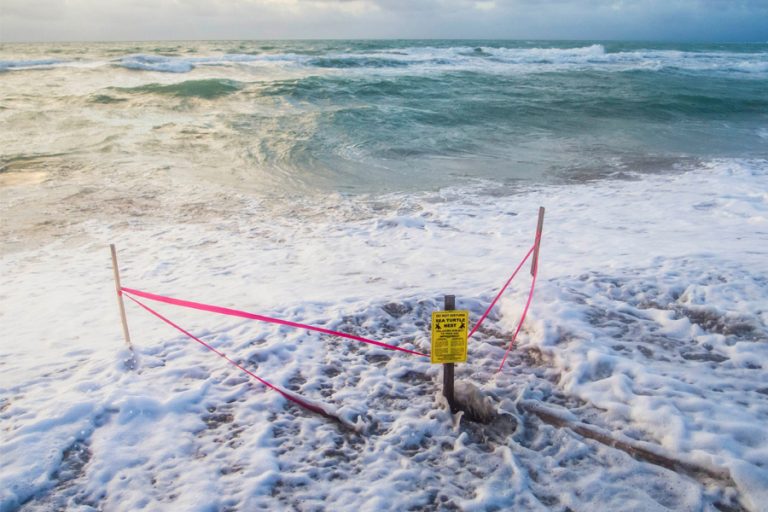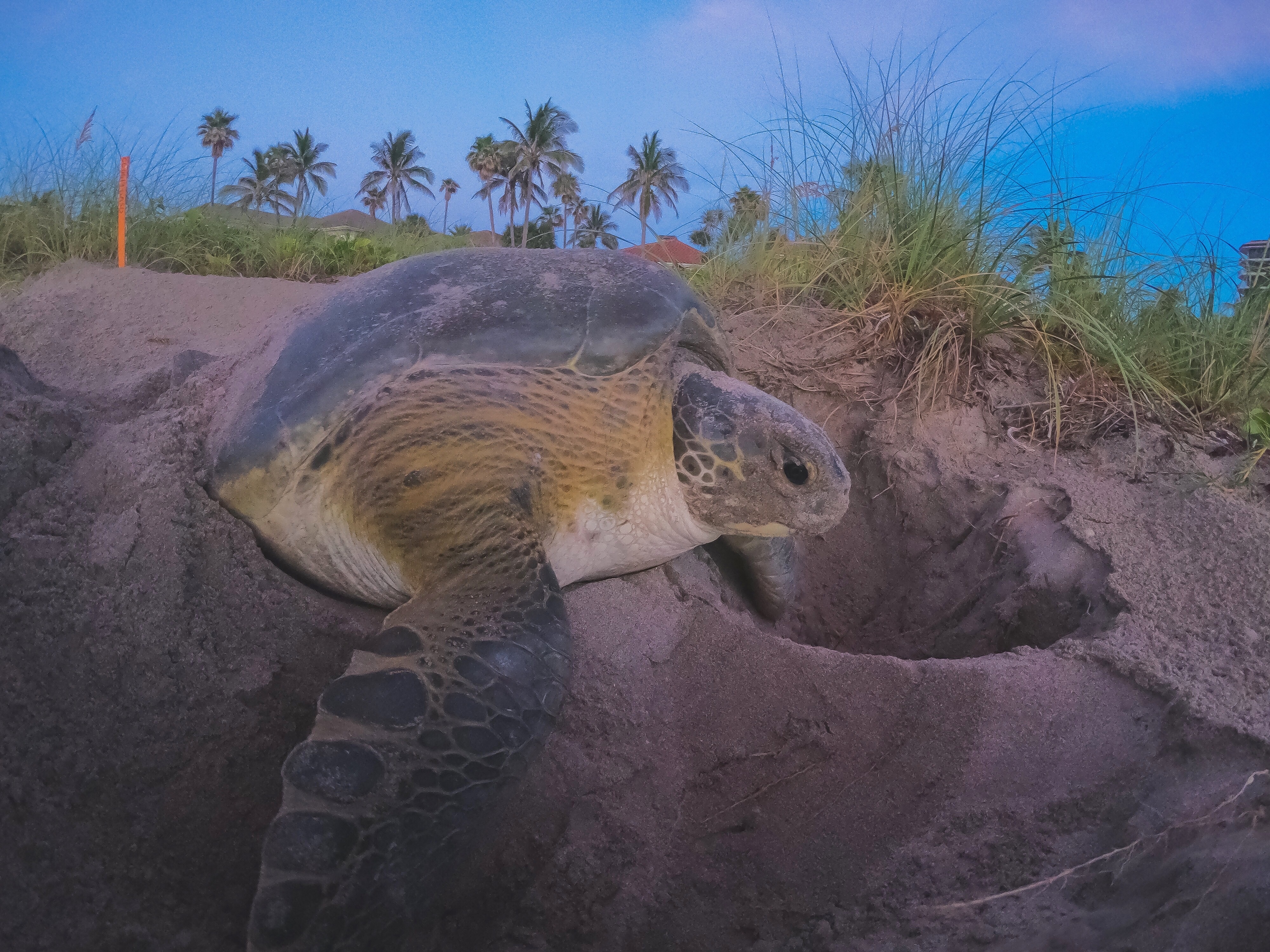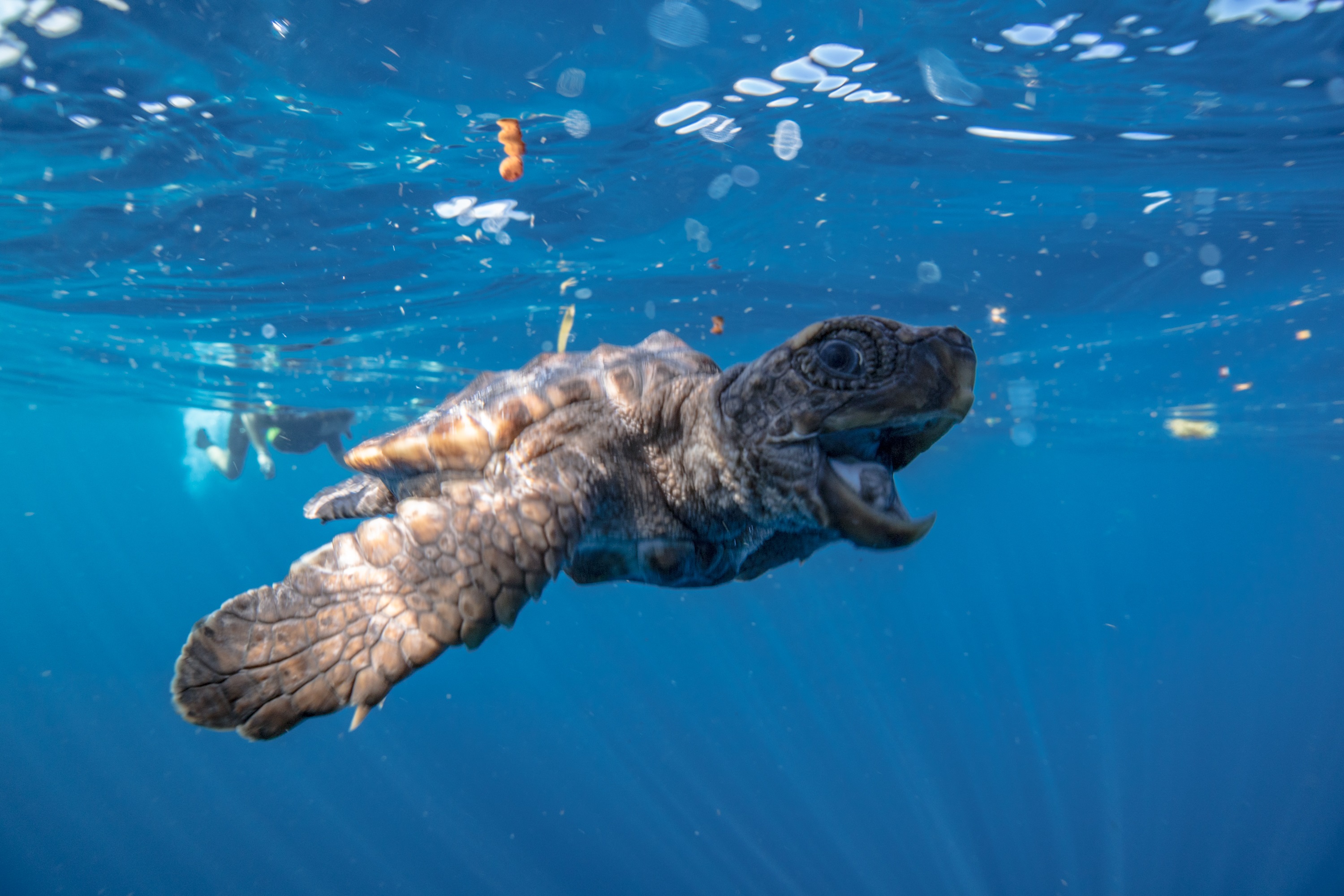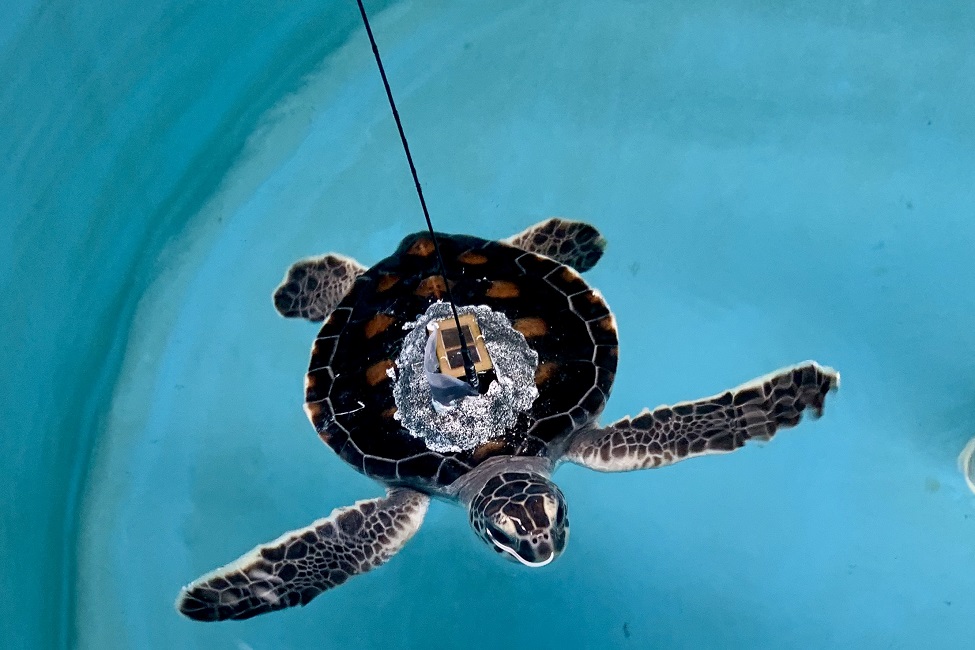Three internationally renowned FAU researchers provide “best practices” and answer some of the most frequently asked questions to help protect Florida’s nesting sea turtles and their hatchlings.
Tag: Sea Turtles
FAU Lands $1.3 Million Grant to ‘Clean Up’ Stinky Seaweed in Florida
Once Sargassum deluges beaches, removing, disposing and repurposing the seaweed presents many logistical and economic challenges. Cleaning up these huge piles of annoying seaweed while protecting these critical habitats at the same time is a precarious struggle.
New Critical Period of Embryonic Sex Determination in Sea Turtles Identified
A study shows that the temperature of the incubation environment could influence the sexualization of the gonads (reproductive organs) in sea turtles earlier than what is currently recognized. Researchers developed a new way to integrate the effect of thermal fluctuations on embryonic sex determination and predict sex ratios with much better accuracy than prior models. By measuring the strength of masculinization or feminization of temperatures using novel parameters, they have uncovered how temperature-sensitive sex determination works. These findings could be similar for other reptiles with temperature-dependent sex determination because similar molecular determinants and enzymatic mechanisms are at play.
Sea turtle conservation gets boost from new DNA detection method
A study led by University of Florida researchers is the first to sequence environmental DNA, or eDNA, from sea turtles — genetic material shed as they travel over beaches and in water. The research project is also the first to successfully collect animal eDNA from beach sand. The techniques could be used to trace and study other kinds of wildlife, advancing research and informing conservation strategies.
Study Finds Why Baby Leatherback Marine Turtles Can’t ‘See the Sea’
For most sea turtles, the journey to find the ocean from their nests is pretty straightforward. However, leatherback hatchlings more often crawl around in circles trying to find the ocean. Circling delays their entry into the ocean, wastes energy, and places them at greater danger from natural predators. Under different moon phases: bright light during full moon and only starlight under new moon, researchers have a better understanding of why this circling behavior happens and why it is most commonly observed in leatherbacks.
Wave wash-over poses threat to endangered sea turtle nests and hatchlings
Waves breaking and hitting the shore are a familiar sight to any beachgoer, but these powerful acts of nature play a big role in whether sea turtle nests thrive in their coastal surroundings. Researchers from the Florida State University Department of Earth, Ocean and Atmospheric Science have found that powerful ocean waves pose a significant threat to sea turtle nests, with wave exposure potentially affecting egg incubation and hatchling productivity.

Coastal development, changing climate threaten sea turtle nesting habitat
A research team led by Florida State University found that sea turtles in the U.S. will have less suitable nesting habitat in the future because of climate change and coastal development. Researchers found areas that will remain or become suitable for sea turtle nesting in the future because of climatic changes and sea-level rise will be exposed to increased coastal development, hindering the ability of turtles to adapt to these disturbances.

World’s Most Complete Health Analysis of Nesting Sea Turtles Conducted in Florida
The most comprehensive health assessment for a green turtle rookery in the world to date is providing critical insights into various aspects of physiology, biology, and herpesvirus epidemiology of this nesting population. Findings are hopeful for this population of green sea turtles in southeastern Florida, offer important data on the profile of health for future comparative investigations, and suggest that viruses are endemically stable in this nesting population.
Sea Turtle Nesting Season in Full Swing, UCF Researchers Keep Working Despite COVID-19
While uncertainty reigns for Floridians due to COVID-19, there’s one thing they can count on: sea turtles are nesting on our local beaches as nesting season heads into its fourth month this June.

Scientists Develop New Way to Identify the Sex of Sea Turtle Hatchlings
Scientists have developed a new minimally invasive technique that greatly enhances the ability to measure neonate turtle sex ratios. This is the first time that differences in sex-specific protein expression patterns have been identified in blood samples of hatchlings with temperature-dependent sex determination. The technique is a crucial step in assessing the impact of climate change on imperiled turtle species and will enable more accurate estimates of hatchling sex ratios at a population level and on a global scale.

Researchers Team up with U.S. Coast Guard to Release and Track Three Baby Sea Turtles
Beach closures and other COVID-19 pandemic restrictions required scientists to get creative. They teamed up with the U.S. Coast Guard to make sure that three baby green sea turtles made it home. The turtles were outfitted with small solar powered satellite transmitters. Data will provide information to help scientists preserve sea turtles’ habitats and give them a hint about the effects of warmer temperatures on their offshore behavior.
Monogamous Female Sea Turtles? Yes, Thanks to Sperm Storage
Female sea turtles mate multiply to ensure fertilization. A study of nesting loggerhead female sea turtles in southwestern Florida used genotyping to uncover how many fathers were represented in their nests. Surprisingly, scientists found that 75 percent of the female sea turtles had mated singly. No male was represented in more than one female’s clutches. Findings provide insights into the relative numbers of males present in the breeding population, which are hard to get because males never come ashore.